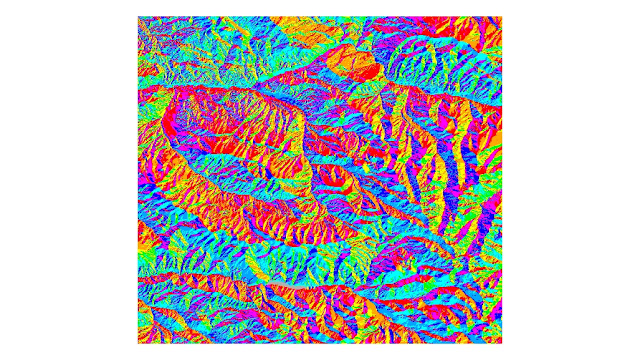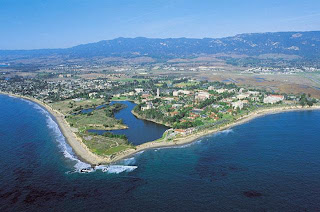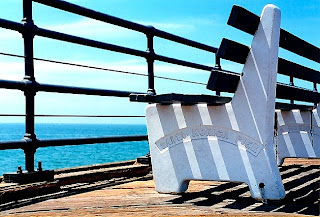For this lab, I have constructed three different population images from data taken from the US 2000 Census data. From this we can see where we have come since the year 2000 with respect to the three populations; Asian, Black, and Other Race.
Please look below to see the figures of each race. Figure 1 displays Asian population distribution, figure 2 shows Black population distribution, and figure 3 illustrates the other race population distribution that are present in the US. Figure 4 gives a representation of how the US is divided into different sections for the distribution of the US Census. Figures one, two, and three were created using Arc Gis, Arc Catalog, and by following the pdf tutorials presented by Professor Shin and through the help of my TA Patrick Khan at UCLA.
Figure 1: Asian Populations
This map displays the Asian population in the United States. When the Asian immigrants arrived to the United States, among the first were the Chinese (Johnson, 2007). Around the 19th century, Asian immigrants were excluded from obtaining citizenship. This greatly hindered their ability to participate in society (Johnson, 2007). Before WWII Asians like the Japanese were forced into the concentration camps. This was very unfair treatment, but as paranoia spread throughout the country about anti-democracy interest, the United States took unfair measures against the Japanese. Following World War II, the not being able to obtain citizenship law was repealed so that more Asians could get into the United States at an easier rate (Johnson, 2007). After much of their strive, Asians have assimilated rather well in the United States. According to C.N. Le, Asians are stereotyped as being all the same (C. N., 2010). This is definitely not the case because Le shows a chart that represents all of the races within the larger denomination of Asian. These include Chinese, Filipino, Asian Indian, Korean, Vietnamese, and Japanese. These values are from highest to lowest respectively (C. N., 2010). As one can see, there are many different types of Asian Americans. Many of which are present on the east, west, and northwestern parts of the U.S. They are especially present in southern California. Asians account for a large amount of the U.S. population and at universities such as UCLA they are almost seen as the majority.
Figure 2: Black Population
The black population in the US is very important to the US census. It has become controversial that the US government did not care about the black population when music artist Kanye West said "George Bush does not care about black people" (Tucker, 2010). He said this in response to George Bush's poor planning and lack of a plan of action to aid the people of Hurricane Katrina. The US census plays a role in situations like these. Money that is appropriated by the Census is given to departments that oversee public safety among other things. As one can see from figure 2, the black population is mostly concentrated in the deep south and on the east coast of the United States. The connection between slavery and black presence in the US can be mentioned to account for the presence in the south and east coast, but there are other factors that lead to the south and eastern concentrations. Black populations have lower incomes than Asian and White Americans and live in different areas where education, income, and healthcare services are low. There is a growing concern that they need to be represented in the allocation of funding. The first step to making this happen, is to incorporate more blacks in the US census. People are hired to go around to make sure that each household turns in their form. A lot of money goes into making sure this happens (for example when the Census was taking place, the government was paying Census employees $18 an hour, with little to no work experience).
Figure 3: Other Races
The US has often been called the melting pot because of its cultural and ethnic diversity. According to figure 3, much of the other race is present in the Midwest and west coast of the United States. This can be accounted to the immigrants who are coming from Mexico. According to Professor Fan who taught Population Geography this quarter at UCLA, Mexico is the country with the largest amount of people emigrating out, while the United States is the country with the largest amount of immigrants from Mexico. Other races account for non black, or Asian. The reason for most of the other races being towards the midwest and the west coast is because of the dispersion of people. According to Professor Fan at UCLA people tend to migrate because of economical reasons. People are in search of work, so much of the highest concentration of other races are located in cities that offer jobs.
Figure 4: The Divisions of the US Census Bureau
Discussion
The US Census is a data collection of the entire nation that is taken once every 10 years. One can see that the US census is vital to the American people. The US Census is conducted, regardless if there are internal and external conflicts, or changes in the nation's interests, or revolutionary events (The U.S. Census Bureau, 2010). The data shows how the US population is growing and how the priorities and interests of its citizens changes. It is very useful to the economy and helps the government allocate funds according to the representation of each area, race, department, etc. This is why it is very important that every possible person should fill it out. Of course there are people who are reluctant to do so, for fear of being deported (like illegal immigrants), for being too lazy, and for not being able to read and understand it, among other reasons. For example, by getting census information from illegal immigrants, the government would be able to appropriate funds to Latino communities if they were represented as an area that required funding.
Conclusion
My overall impression of GIS has ended on a good note. I had previously done work under Kris Kaiser in the Life Sciences Department and explored the species distributions of frogs in Belize. Although I had to stop my research because of time commitments, I owe a lot to her and what she has taught me. Now in taking this GIS class, I have learned the details behind the process and how maps are created instead of just following and memorizing a series of steps to create a map. I know what models to use for different situations and how important it is for a map to be on the same scale as the data. Throughout the quarter we have learned to work on labs from Beverly Hills, to neogeography, to investigating the pitfalls of GIS, to the station fire, to projections, to digital elevation models, and finally lab 8, which is mapping the US census among different races.
There are many pitfalls to GIS, as explored in lab 4, but at the same time it is immensely useful. We are able to do an endless amount of calculations with GIS such as, map out species distributions like I had done in my research in order to predict which species will be at risk of extinction, or we can map out traffic in the LA area to find ways to reduce the influx of vehicles at certain times of the day, and many other things. Just as TA Patrick Khan said, "I have worked with GIS for many years and it still surprises me how much I still do not know about it." GIS is a learning process the entire way through. I hope to work with GIS in the future after I graduate UCLA with my Geography and Environmental Studies degree. The growing need for conservation in the world we live in today has much need for GIS.
Bibliography
C. N., L. (2010). Population Statistics. Retrieved 12 7, 2010, from Asian-Nation: http://www.asian-nation.org/population.shtml
Energy Information Administration. (2000, June 14). Regional Energy Profiles: U.S. Census regions and divisions. Retrieved 12 7, 2010, from Energy Information Administration: http://www.eia.doe.gov/emeu/reps/maps/us_census_files/cendivco.gif
Fan, C. C. (2010). Population Geography. Retrieved from lecture notes.
Johnson, D. (2007). Asian-American History. Retrieved 12 7, 2010, from Info please: http://www.infoplease.com/spot/immigration1.html
The U.S. Census Bureau. (2010, October 5). History. Retrieved 12 7, 2010, from U.S. Census Bureau: http://www.census.gov/history/www/through_the_decades/fast_facts/
Tucker, K. (2010). George Bush really does not 'appreciate' Kanye West's Katrina criticism: 'The worst moment of my presidency'. Retrieved 12 7, 2010, from Entertainment Weekly : http://watching-tv.ew.com/2010/11/02/george-bush-kanye-west-lauer-today/






































